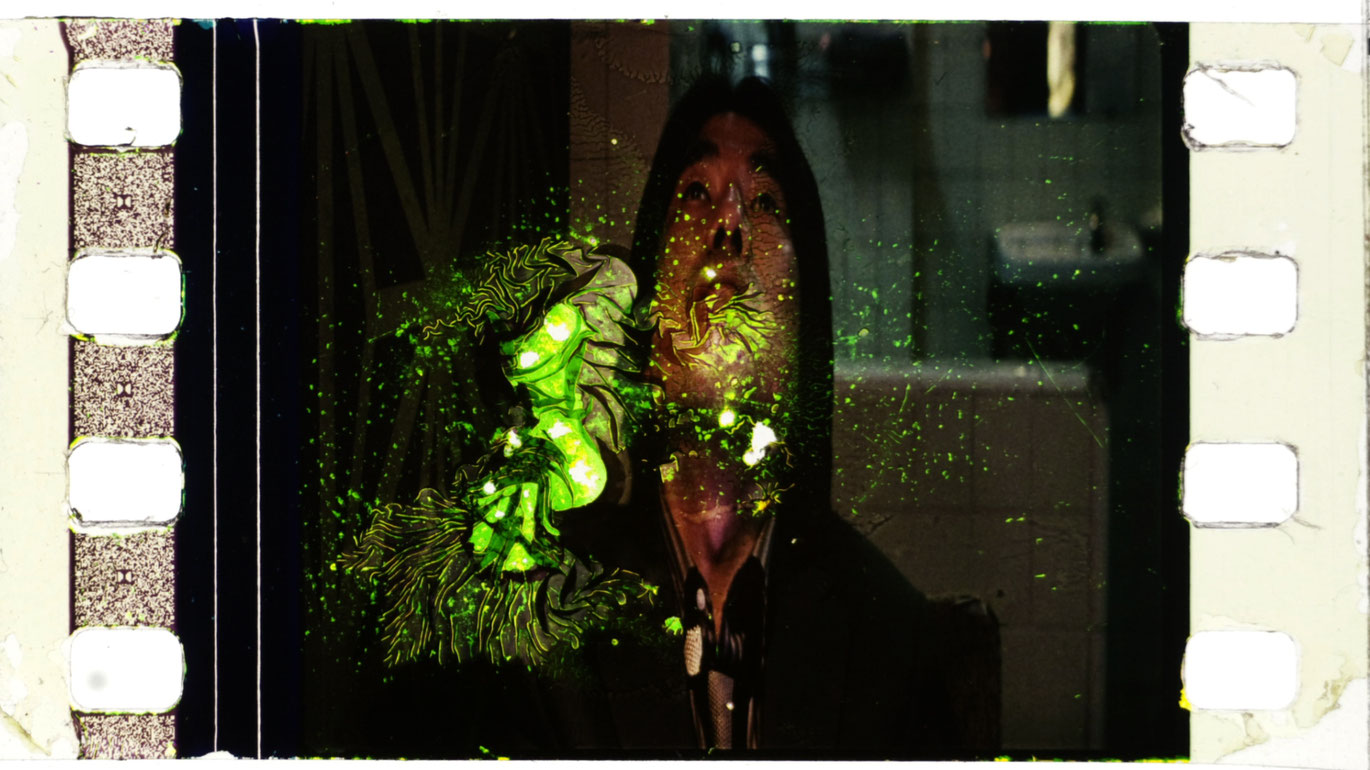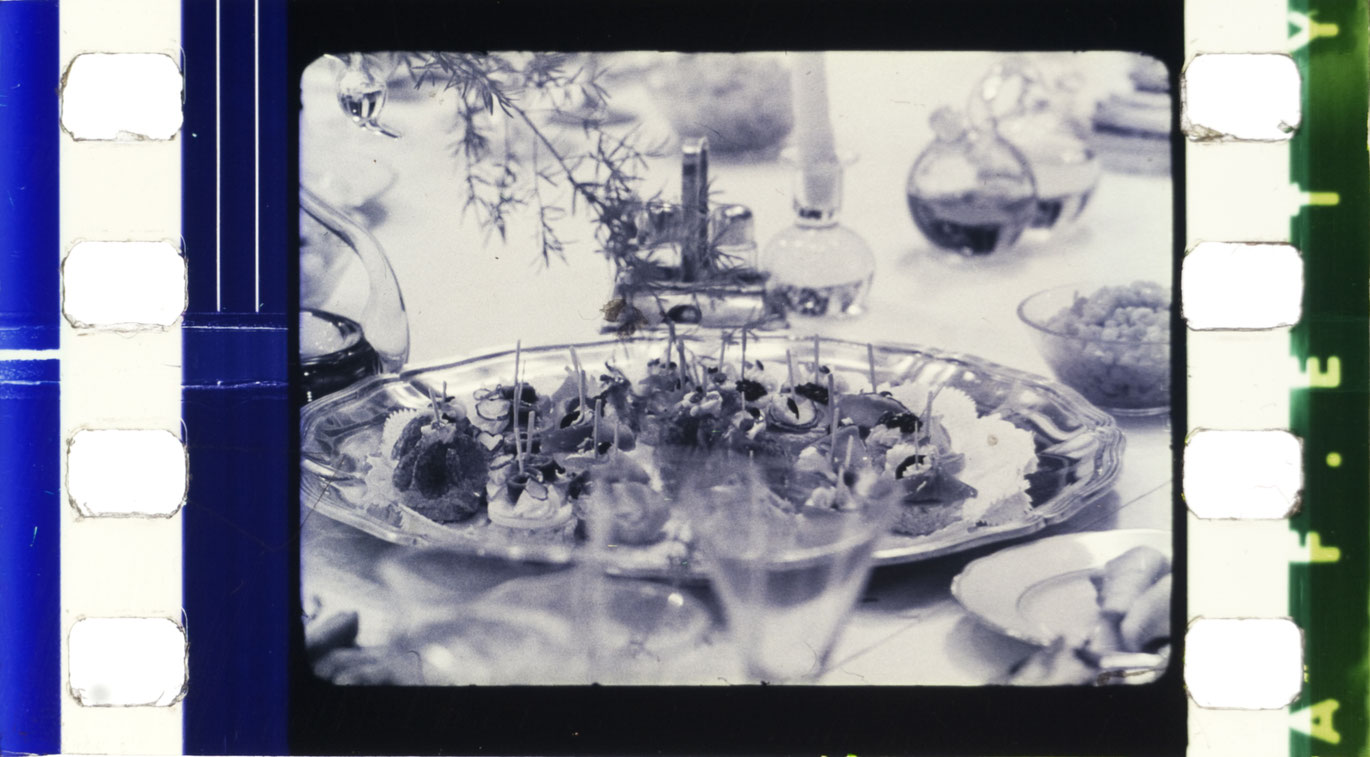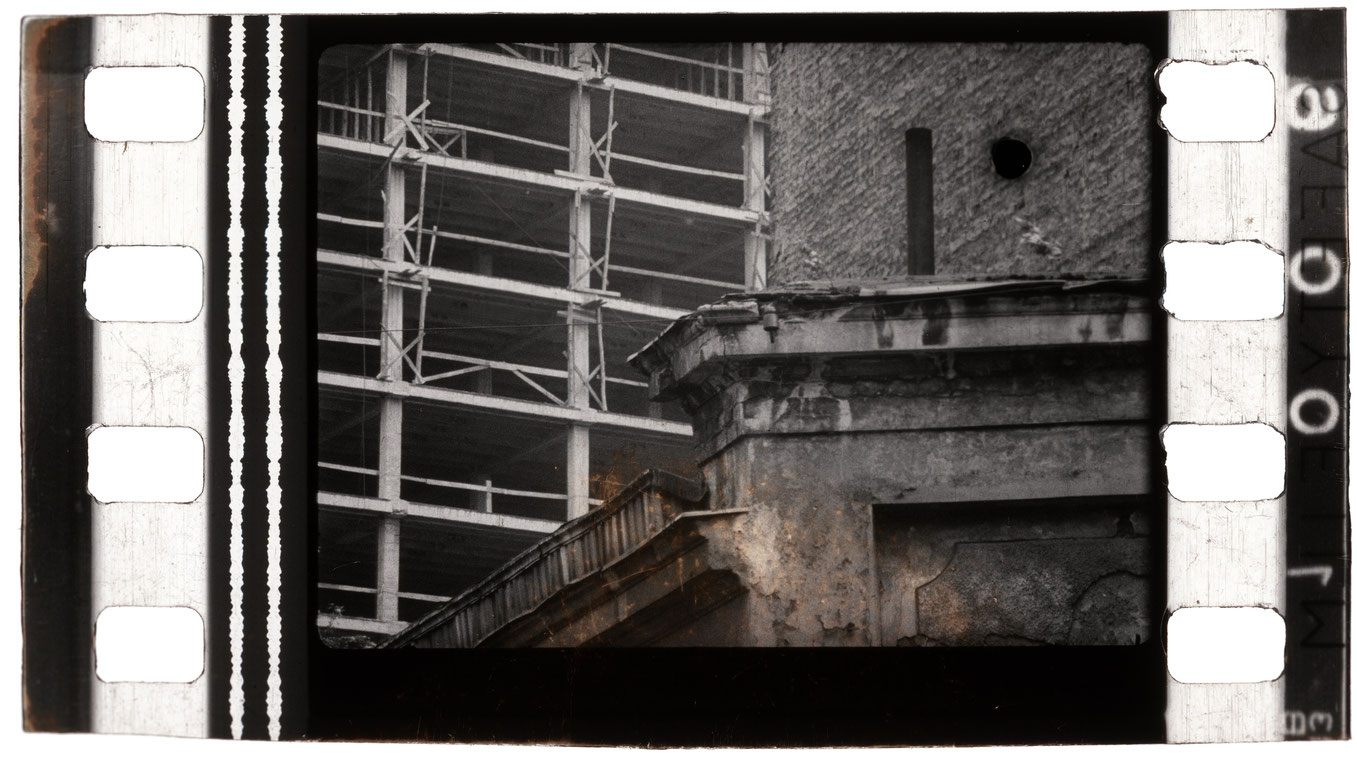The Quick Brown Fox Jumps Over the Lazy Dog
The green opening credits race across the screen so fast that the only way to read everything is by pausing the film. The scenes that follow are cut even shorter: Each consists of solely a single frame taken from other films, reproduced carefully, including the sprocket holes, and mounted in sequence. When projected in the normal way they are 1/24 seconds in length, and they are all differentiated so clearly that the succession creates a kind of flickering, which is rhythmically synchronized with the stuttering of the somewhat fragmentary optical soundtrack. This makes it difficult to tell who is a boxer, who Viktor is, and where the dike of Sylt is located.
At the same time Johann Lurf´s super-short cuts appropriate the structure of a classic feature film. In the twitchy editing the individual frames deconstruct the normal sequence: The passage with various black frames – which serves as a kind of leader – is followed by another with fragments of a number of opening credits, then snippets of locations, possibly from establishing shots. Then come individuals or groups of two or more people, posing inside or outside, walking, driving cars, making music or having sex. Here and there subtitles appear suddenly, here and there a star can be recognized. But whether Charlotte Rampling, Klaus Kinski, wet asphalt, Kubrik´s The Shining, a box terrier or the sky: Everything possesses the same contingency. There is no dialogue, no shot/countershot, no chase ensues after these brief appearances. On the contrary, Lurf´s thesis film has a great deal in common with the found-footage experiments made by artists of the American neo-avant-garde, such as Morgan Fisher or Bruce Connor, though the way Lurf accelerates his visual salvoes is undoubtedly intended to produce ambiguity between media-specific reflection and overwhelming the audience.
(Rainer Bellenbaum)
I collected more than 3000 single frames from numerous feature films in projection booths of several Viennese cinemas, which were cut off. Then he restructured them to a racy image-sound-staccato.
(Johann Lurf)
The impossible-to-remember, tricky-to-pronounce Zwölf Boxkämpfer jagen Viktor quer über den großen Sylter Deich 140 9, by Johann Lurf, that ‚pangrammatic‘ title - which roughly translates as „Twelve boxers chase Viktor diagonally over the great Sylt dike“- is the German equivalent of „The quick brown fox jumps over the lazy dog,“ and is a suitably weird moniker for a three- minute movie which consists entirely of 3664 frames from other films, reportedly snipped out by Lurf during his time working as a projectionist. A headlong bombardment of images and sounds, the cheekily larcenous Zwölf Boxkämpfer is as much of a brain-scrambler as Symbol, and perhaps the most potent distillation of the ‚Rotterdam spirit‘ at its best.
(Neil Young, In: The Tribune Magazine, February 8th 2010)
If the biggest utopia for a cinephile director would be to seize all the images in cinema history and include them in one single film, the dream of found footage filmmakers is to analyze those images in order to find ideas and new unexpected patterns. Lurf doesn´t want cinema to lose its utopian power, and so he creates a sort of tornado made of hundreds of film frames organized with a precise and yet almost invisible logic, because the eye can barely distinguish any visual constant in this three minutes of dizzying chaos. A film pangram, or a challenging short film that searches for a cinematographic Babel.
(Buenos Aires International Film Festival)
Zwölf Boxkämpfer jagen Viktor quer über den großen Sylter Deich 140 9
2009
Austria
3 min



